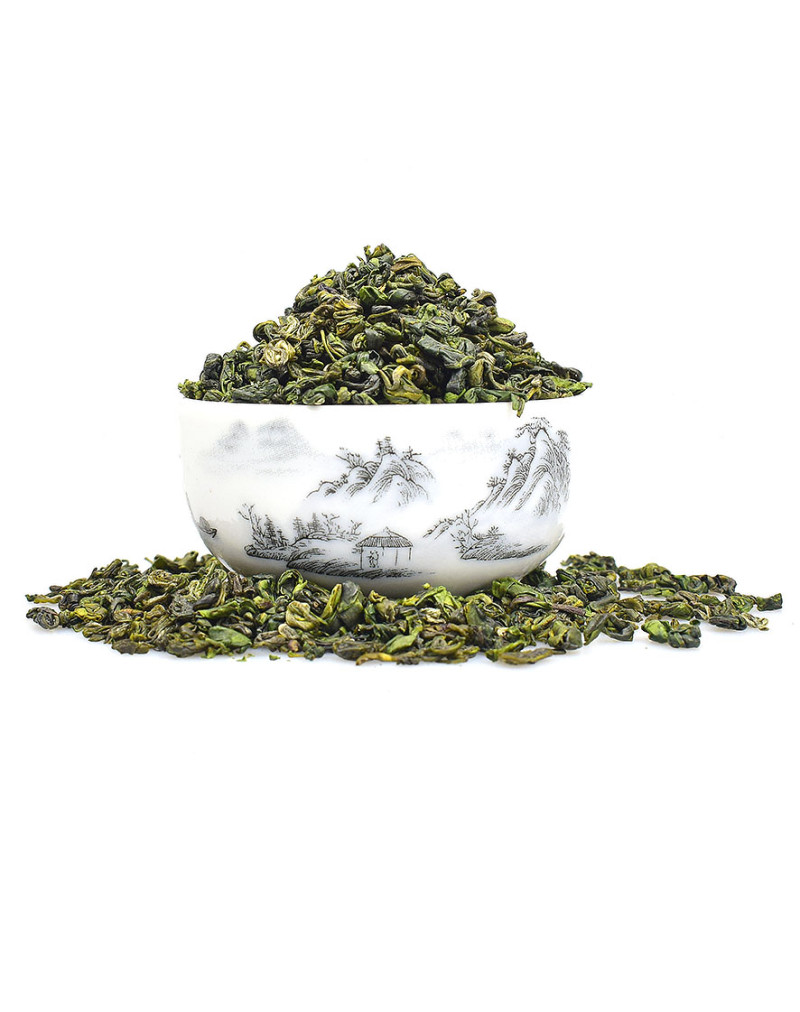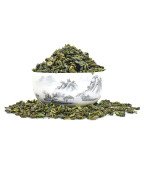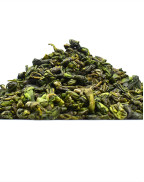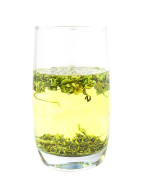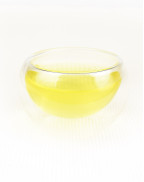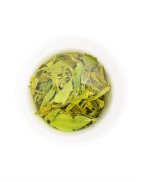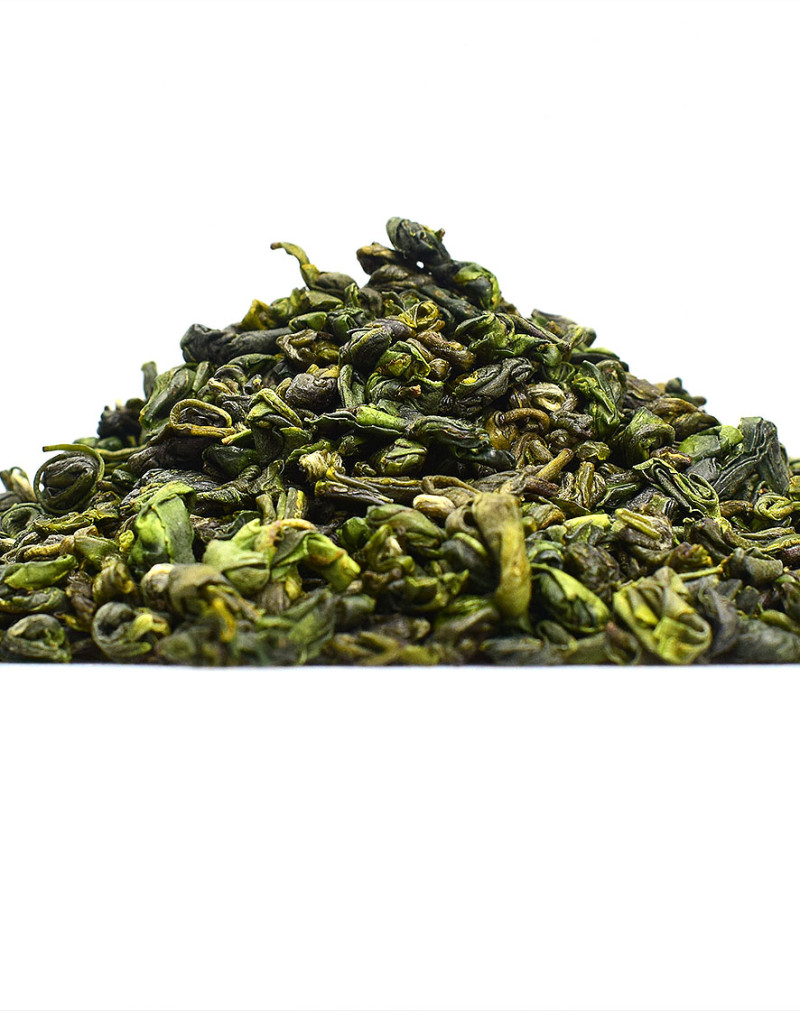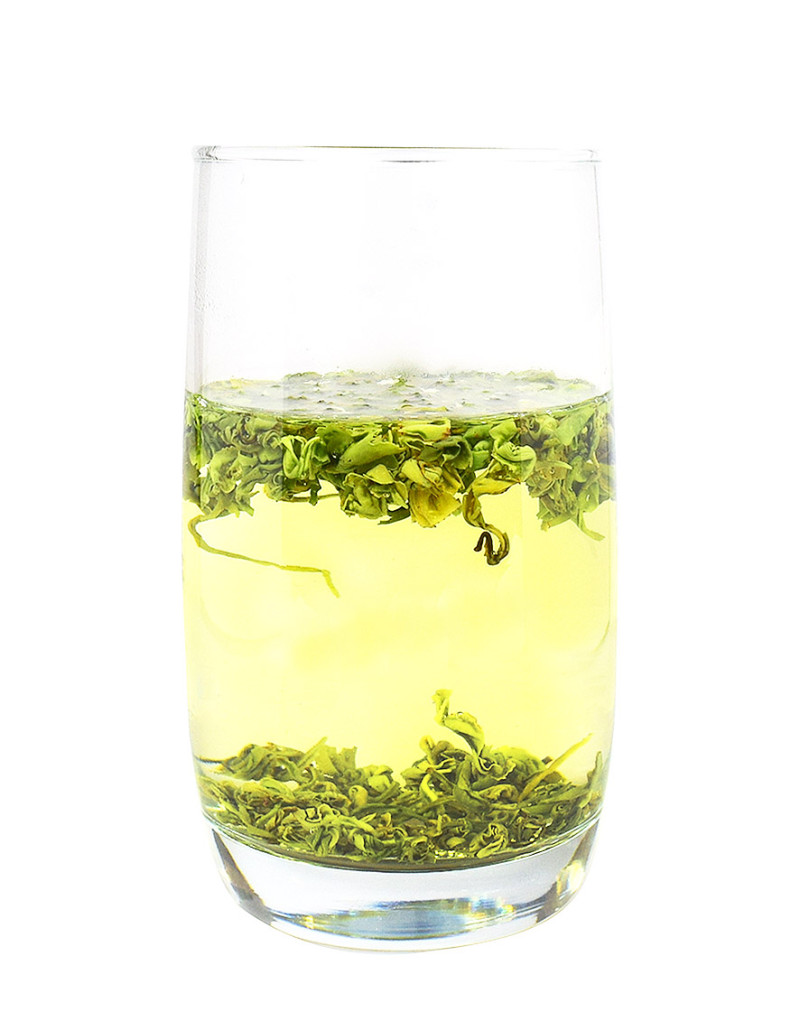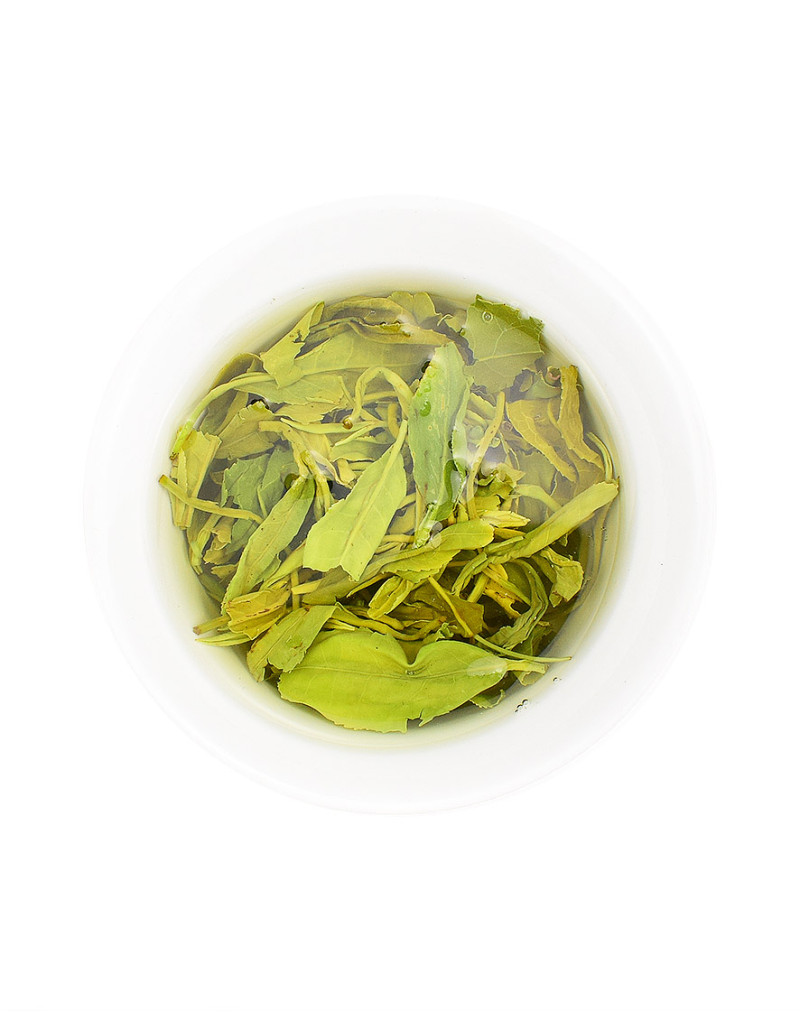Organic Emerald (Green Treasure Stone) Green Tea
- Product Code: simple
- Availability: In Stock
Basic Info
Name: Organic Emerald (Green Treasure Stone) Green Tea
Other Names: Gui Zhou Green Treasure Stone Tea
Category: Green Tea
Origin: Guiyang, Guizhou
Tea Bush: Medium-leaf tea variety
Taste & Aroma: Highly refreshing,soft,delicate flavor,sweet aftertaste
Tea Garden: An organic ecological tea garden on the Guizhou Plateau
Liquor: Yellowish,clear and bright
Dry Leaf: Tightly rolled,dark green,downy
Harvest Period: Spring 2023 (First Flush)
Altitude: 1000M above sea
Fermentation: None
Season: Spring tea
Item Form: Loose leaves
Ingredients: Natural tea buds and leaves
Shelf Life: 10 months at room temperature / 18 months with low temperature storage
Organic Emerald (Green Treasure Stone) Green Tea
Emerald green tea is one of the top ten famous teas of Guizhou Province, China.
It is an innovative tea developed by Mr. Mou Yingshu, a local tea expert in Guizhou Province, in 2003. It is also one of the few green teas in China that use one bud and two or three leaves as raw materials to win the international gold medal. It overturns the traditional practice of making high-quality green tea with only one single bud as raw material.
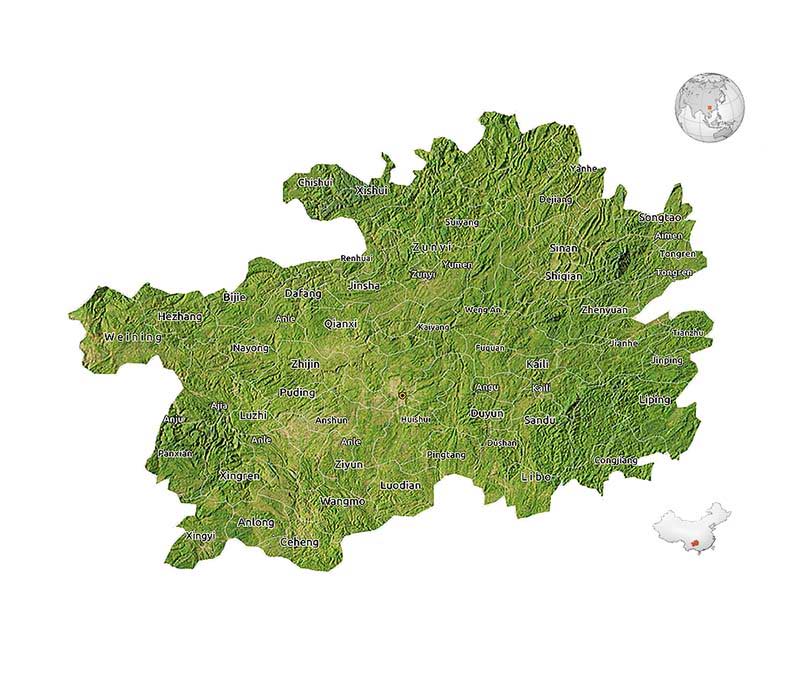
GuiZhou
Show Full Description
To make emerald green tea, one bud and two or three fresh leaves are allowed to be used. Before the birth of this kind of tea, only pluckings with single bud or one bud and with one leaf were allowed to be used to make high-grade green tea. The appearance of this tea broke the long-standing convention.
This high grade green tea is made with traditional and modern tea processing technology . They are deliberately tightly curled into the shape of a spiral flower. After brewing, tea leaves stretch naturally, producing bright yellow-green soup with fresh chestnut aroma and mellow taste.
The mature leaves can be infused as many as seven times, releasing slightly different notes each time. Since it was put into the market, it has won the praise of many tea lovers for its unique quality. It is a good tea worth tasting.

The Beautiful Scenery In The Mountainous Areas Of Guizhou
Name
Like many green teas in China, the name of the tea always has a great relationship with its characteristics. It is said that the inventor of this kind of tea thought that the tightly rolled tea was like green gems, so he gave it this nice name.
Tree species
The tree cultivar of lvbao tea is a small shrub with middle-sized leaves grown in Guizhou.
Guizhou Province
Guizhou province in China is known for its production of green tea. The province has a favorable climate and rich soil, which provides ideal growing conditions for tea. The tea plantations are located on the hills and mountains, surrounded by lush vegetation and scenic views. Green tea is a popular beverage in China and is widely exported to other countries. It is known for its delicate flavor and health benefits, making it a popular choice among tea drinkers around the world. The tea plantations in Guizhou use traditional methods of cultivation and processing, passed down from generation to generation, to ensure the high quality of their tea. Overall, the green tea industry in Guizhou is an important part of the local economy and culture, providing employment for many people and contributing to the preservation of traditional tea-making techniques.
The climate in Guizhou is generally mild and humid, with four distinct seasons. Winter is short and mild, while summer is hot and humid. The area is known for its high levels of rainfall, making it a lush and green landscape year-round.
The province is well-connected to other parts of China, with a network of highways, railways, and airports. Major cities like Guiyang, the capital of Guizhou, are also connected to other cities within the province by road and rail, making it easy to get around and explore the area.
Growing environment
Guizhou Plateau, which is famous for its abundant water resources, is influenced by the uplift of the Qinghai-Tibet Plateau. Mountainous Guizhou Province is rich in forest resources and has long been a haven for many kinds of plants and animals thanks to abundant rain and mild climate.
The mountainous area of Guizhou Province is not suitable for the growth of big trees, because of the insufficient sunshine time caused by the perennial cloud cover, but it is very suitable for the growth of tea trees. The natural conditions of "high altitude", "low latitude" and "less sunshine" make Guizhou Province a paradise for high-quality green tea.

The Beautiful Scenery In The Mountainous Areas Of Guizhou
Guizhou Plateau is one of the regions with the richest biological species in China. The biodiversity of this area leads to a large number of natural enemies of pests, which also leads to a low frequency of pests and diseases.
In addition,the cold winter days in Guizhou is not conducive to the growth and reproduction of various pests. This is very beneficial to premium tea growth, avoiding the heavy use of pesticides.
Fenggang County is a long - standing tea producing area, located in the area of ancient Yi Prefecture. Lu Yu, a tea master in the Tang Dynasty, recorded in The Classic of Tea: "... the quality of tea from Yizhou, Guizhou province is excellent ...".
Fenggang County, located in ancient Yi Prefecture, has been an area of high quality tea production since ancient times. The extensive and profound tea culture here has provided extremely favorable conditions for the development of new famous tea. The main producing area of emerald tea is located in Yongan town, Fenggang County, northern Guizhou Province. Yongan Town is located in the mountainous area 800-900m above sea level, where the average annual temperature is 15.2℃ and the average annual rainfall can reach 1200mm. It was rated as one of China's top 100 ecological counties. The hilly terrain of the tea area, with deep and fertile soil rich in zinc and selenium elements, has won the title of "the Hometown of organic tea rich in zinc and selenium in China".

Tea Shoots At An Organic Tea Garden In Guizhou
Characteristics
Process of production
Unlike other green teas, which use young buds and leaves, emerald tea tends to be made from more mature buds and leaves.Due to the longer growth period of mature tea pieces, they are rich in nutrients, such as rich theanine, reducing sugar, ammonia sugar, whole fruit acid, chlorophyll, etc. Compared with green tea from other regions, the content of emerald tea is half higher.Emerald tea can be in spring, summer and autumn.
Picking
Before picking, technicians should sample the fresh leaves to check whether the pesticide residues and heavy metals contents in tea meet the EU standard. The tea gardens of emerald tea must also be inspected and monitored by institutions with the qualification of European Union testing standards for agricultural residues, heavy metals and air quality in the area. Only those tea gardens that have undergone strict inspection can be used to make jadeite tea.

Workers Pick Tea At a Tea Garden In Guizhou Province
Withering/wilting
This process is accomplished by means of natural withering and air blast equipment. The fresh-picked leaves must undergo a series of physical and chemical changes that reduce the water content of the fresh leaves and reduce the grassy smell while exposing the fragrance. In this process, the physical and chemical reactions also increase the contents of amino acids and water extract, thus producing better taste.With the combined action of water and temperature, the chlorophyll in the leaves is also broken down appropriately, which darkens the color of the leaves and makes them more flexible and resistant to breakage.
Kill-green
Similar to other green tea preparation methods, Kill-green is a typical procedure for making green tea. It has three purposes: first, it uses high temperatures to dull the activity of enzymes in the fresh leaves, giving the leaves a verdant color. The second is that the substances contained in tea can be transformed by the action of high temperature, so that the final tea can produce more aroma. The third is to evaporate some water, soften the leaves and increase the elasticity, laying the foundation for the next step of shaping.
Rolling
Rolling reduces the volume of tea leaves and compacts them into tea strips. Proper kneading and squeezing can distort leaf cells and make tea juice overflow to the surface of the leaves, which is beneficial to improving the color of the leaves, increase the endurance of brewing and improving the freshness of tea brewing.
Drying and enhancing aroma
The tea leaves are dried to stabilize their quality and taste. Then these dried tea leaves are screened to remove the incomplete leaves, stems and other impurities to ensure the final tea quality.

Emerald (Green Treasure Stone) Green Tea
Organic Tea Standards
Organic tea is a kind of pollution-free and pure natural tea
Organic tea uses natural green fertilizer in the planting process, and adopts biological or physical methods to prevent and control diseases and insect pests. It is based on natural farming, and it is not allowed to use any chemically synthesized pesticides and fertilizers. Chemical additives are not used in the processing of organic tea. In the whole production and processing process, organic tea keeps the most complete aroma and taste of tea, and at the same time, it minimizes the pollution to the environment. Organic tea is produced in accordance with the standards of the International Federation of Organic Agriculture Movements (IFOAM), and has passed the organic certification of the Organic (Natural) Food Certification Organization.
Some of approved certifying organisations:
|
United States |
USDA |
| European Union |
ECO-CERT, European Commission |
|
Australia |
NASAA , ACO |
| France |
ECO-CERT , COSMEBIO |
| UK |
SOIL ASSOCIATION |

You can find your favorite organic teas in Teapooo. We make a commitment that the organic teas we provide are grown and produced without any chemical synthetic pesticides and fertilizers, and without any chemical additives in the production of organic tea. Our organic teas come from trusted and reputable organic tea suppliers in China, and has undergone our strict examination. Our primary goal is to provide delicious and healthy organic teas to tea lovers around the world. The organic teas we supply have been certified by one or more certifying organisations (such as JAS, USDA, ECO-CERT, NASAA, etc) and obtained the certificates issued by them. You can find copies of these certificates on our product detail pages.
| Chinese Gongfu Method | |
| Tea | 3g |
| Water | Gaiwan 3oz / 90ml |
| Time | 4 steeps (15s, 25s, 35s, 1m) |
| Temperature | 80°c |
| Teapot Method | |
| Tea | 5g |
| Water | Teapot (8-12oz /240- 350ml) |
| Time | 1- 3mins |
| Temperature | 80°c |


